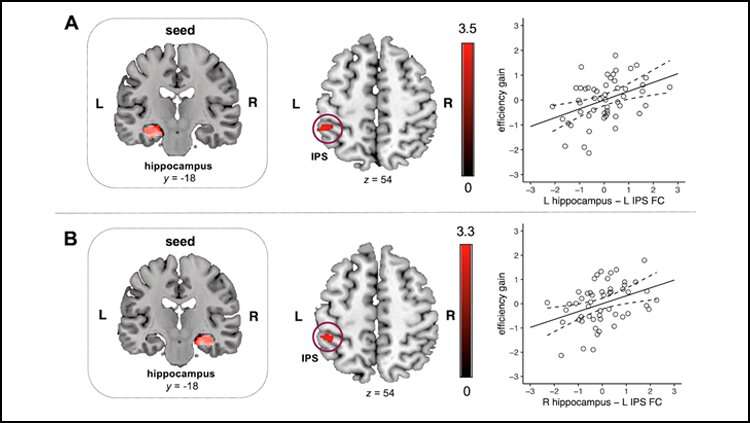
The strength of a brain circuit predicts the ability of children to learn math, according to research recently published in JNeurosci. Tutoring regimes designed to target the circuit may improve learning outcomes for children across a range of abilities.
Before children can learn to add and subtract, they must learn which abstract symbol, like “4” or “6,” represents which quantity, a skill also known as number sense. Researchers know the intraparietal sulcus (IPS) plays a role in number processing but didn’t know the brain circuits involved in learning number sense. Chang et al. developed a four-week number sense training program and identified brain circuits which drive learning in elementary school-aged children. The training emphasized mapping abstract number symbols to the non-abstract quantities they represent, rather than simple fact memorization. The researchers examined synchronized activity between the hippocampus, an area involved in learning and memory, and other brain areas.
The connection between the hippocampus and the IPS before training predicted a child’s ability to learn number sense: children with more synchronized activity learned more during the course. This relationship held true for typically developing children as well as children with mathematical learning difficulties.
Source: Read Full Article
